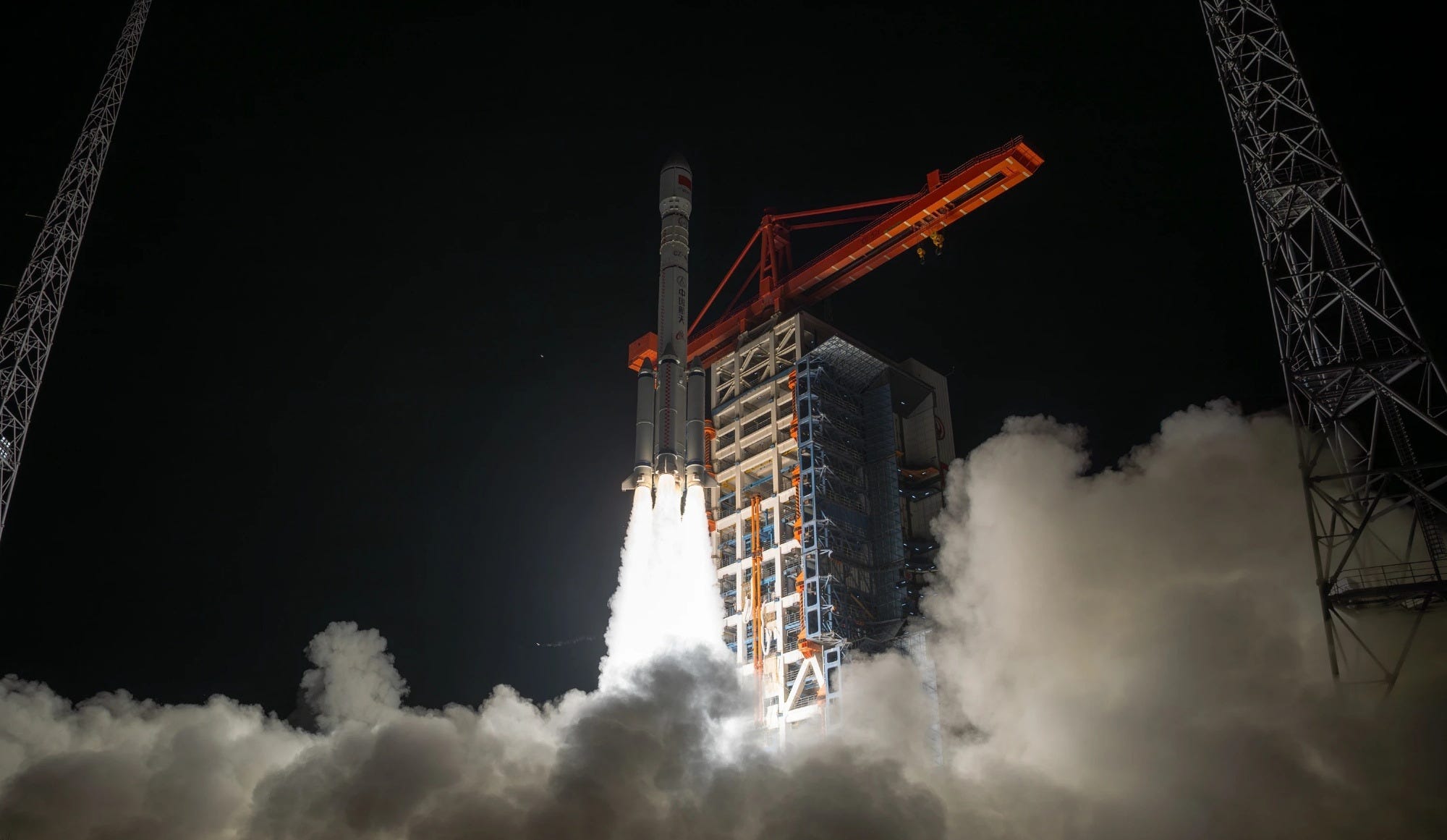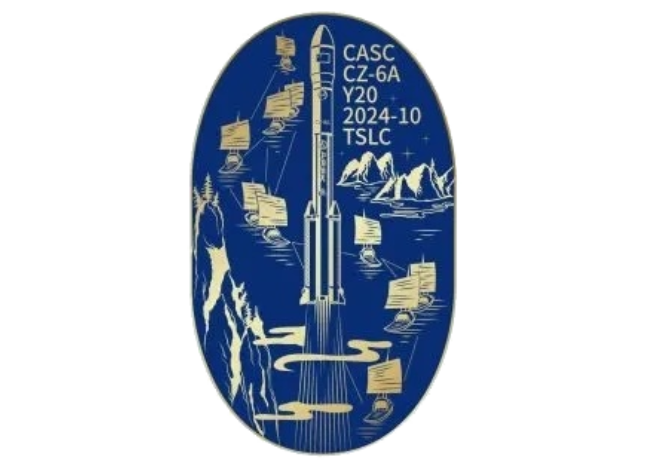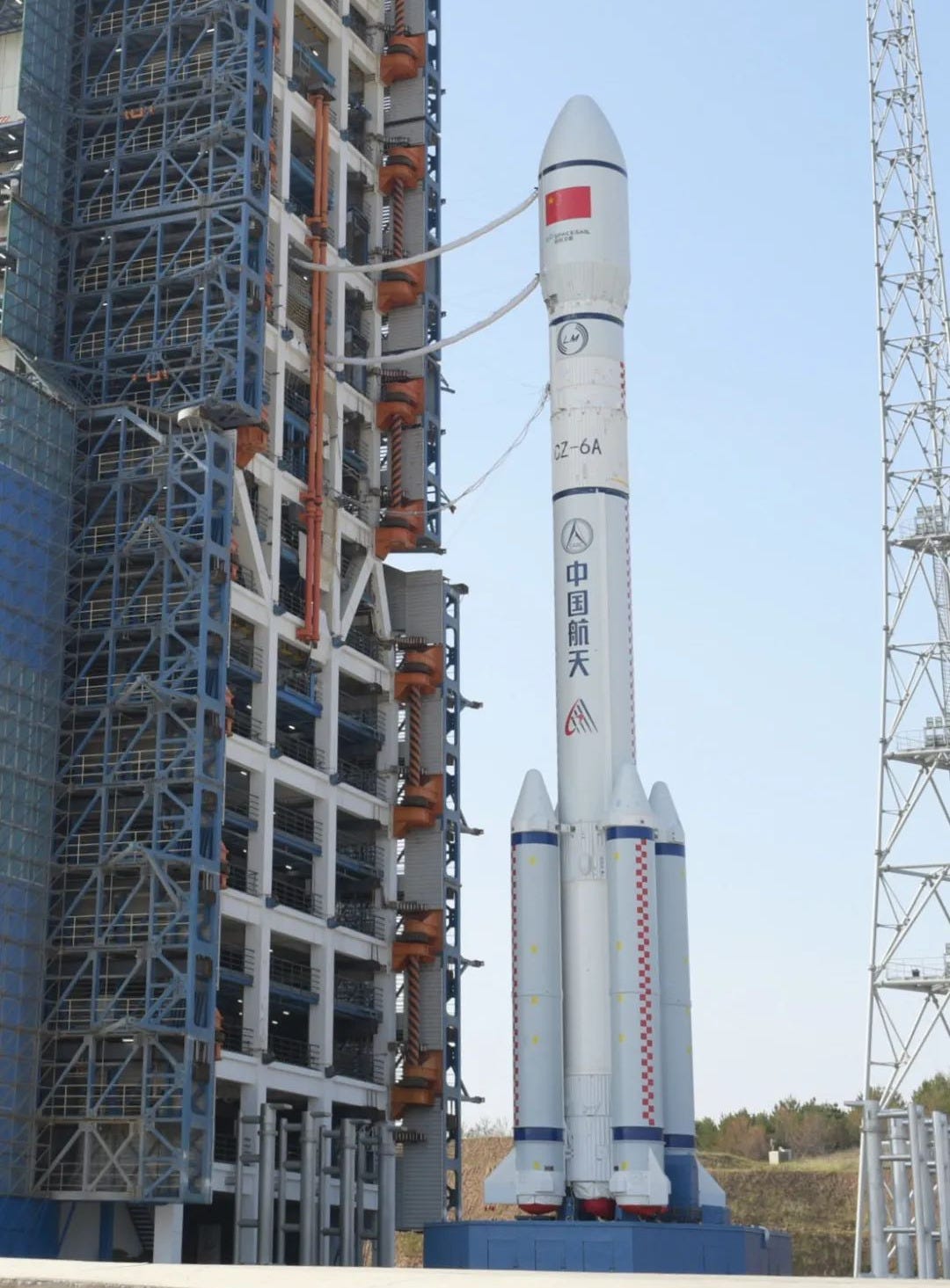It's space internet time [Long March 6A Y20]
The second group of Qianfan satellites were launched into orbit!

The second group of Qianfan satellites were sent into orbit on October 15th at 19:06 pm China Standard Time, or 11:06 am Universal Coordinated Time. These satellites were delivered into a polar orbit by a Long March 6A flying from Launch Complex 9A, at the Taiyuan Satellite Launch Center.
Like the previous launch, eighteen satellites were atop of the vehicle. All eighteen satellites were deployed from the Long March 6A Y20’s second-stage in polar orbit, also like the first group of satellites.
During the announcement of a successful mission, the Shanghai Academy of Space Technology emphasized the following:
“As China's new-generation main medium-sized launch vehicle, the Long March 6A launch vehicle has entered a high-density launch state. The test team adheres to the “first flight consciousness”, treats every launch mission as the first time, and carries out the work in strict accordance with the launch site process. During this mission, the test team continued to optimize the mission process at the launch site. While ensuring a tight and orderly work rhythm, it shortened the test launch cycle and actively responded to subsequent high-density launch requirements.”
If there are any problems with this translation please reach out and correct me.
Each Qianfan satellite is believed to weigh 300 kilograms with a 'flat pack' design to fit as many satellites as possible inside the rocket fairing. For maneuvering on orbit, each satellite has an electric hall-effect thruster burning krypton to generate 20 millinewtons of thrust, with a specific impulse of 1,385 seconds.
For 2024, 108 satellites are planned to be launched, possibly for four more launches this year if they are launched in groups of 18. Longer-term plans for the constellation will have it provide regular internet coverage of China by the end of 2025, and regular internet coverage worldwide by the end of 2027. By the end of 2030, 15,000 satellites are planned to be on-orbit.
The Qianfan (千帆) mega-constellation, formerly called G60 Starlink, is operated by Shanghai Spacecom Satellite Technology, which is partly backed by the municipal government of Shanghai. Qianfan is also part of Shanghai's plan to foster a strong space industry between 2023 and 2025.
This was the 539th launch of a Long March rocket overall, the 8th launch of a Long March 6A, along with being the 220th Long March vehicle launch from the Shanghai Academy of Spaceflight Technology, and the 48th launch from China this year.
Liftoff footage via China航天 on Weibo.
Check out the previous Long March 6A launch
What is the Long March 6A?
This section is for those less familiar with China's Long March series of launch vehicles.
The Long March 6A is the first new-generation launch vehicle in China to utilize a combination of solid and liquid propellants. This vehicle was developed by the Shanghai Academy of Spaceflight Technology and utilizes a two-and-a-half-stage design, the boosters burn an unspecified solid propellant with the first and second stages burning rocket-grade kerosene and liquid oxygen.
The payload capacity of the launch vehicle is currently as follows:
8,000 kilograms to low Earth orbit
4,500 kilograms to a 700-kilometer sun-synchronous orbit
The first-stage is powered by two YF-100 engines, generating a combined thrust of approximately 244 tons using rocket-grade kerosene and liquid oxygen. The first-stage is augmented by four solid rocket boosters, each producing 124 tons of thrust from an unspecified solid propellant, resulting in a combined booster thrust of 492 tons. Together, the first-stage and boosters generate a total thrust of 736 tons. The second stage is powered by a single YF-115 engine, producing 18 tons of thrust using also burning rocket-grade kerosene and liquid oxygen.
On the launchpad, the Long March 6A is believed to be up to 52 meters tall, two fairings are available with one 2 meters taller than the other, and weighs 530,000 kilograms when fully fuelled. The first and second stages of the vehicle have a diameter of 3.35 meters while the solid-fuelled boosters have a diameter of 2 meters, the fairing has a diameter of 4.2 meters.
So far every Long March 6A has launched from the Taiyuan Satellite Launch Center, in the north of Shanxi province.





![China begins mega-constellation construction! [Long March 6A Y21]](https://substackcdn.com/image/fetch/w_1300,h_650,c_fill,f_auto,q_auto:good,fl_progressive:steep,g_auto/https%3A%2F%2Fsubstack-post-media.s3.amazonaws.com%2Fpublic%2Fimages%2Fdaf68fbf-31e0-402f-87ab-994268bf8baa_2560x1707.jpeg)
